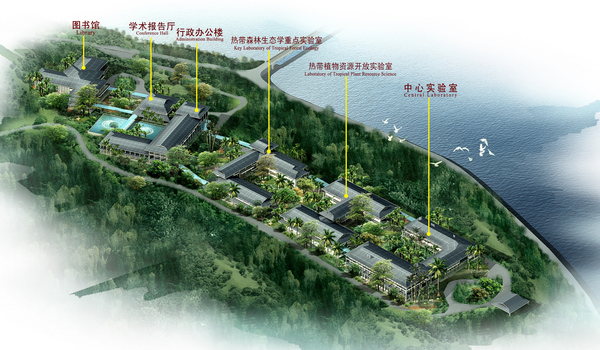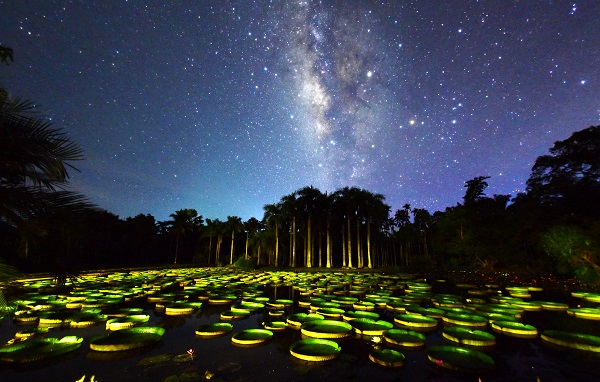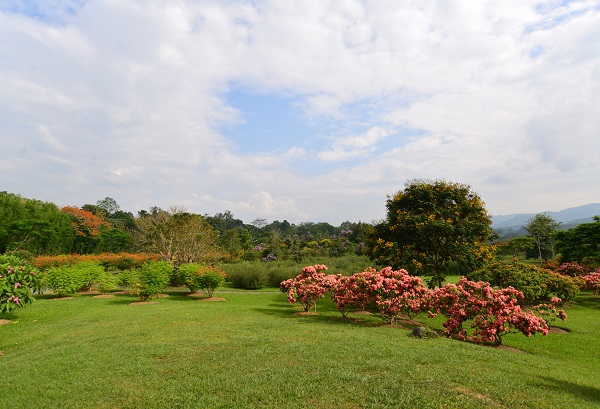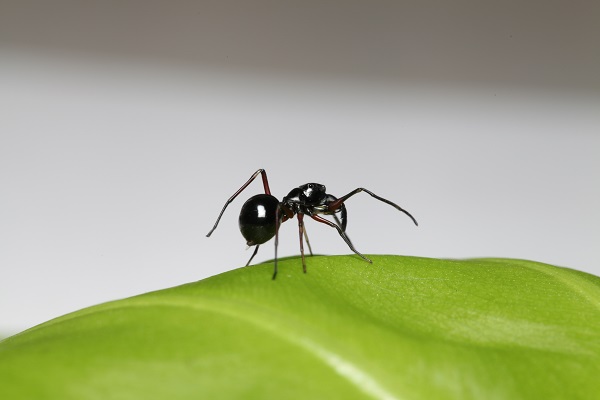| About Us |
| News |
| Announcement |
| Research |
| Conservation & Horticulture |
| Public Education |
| Graduate Study |
| Scientist |
| International Cooperation |
| Resources |
| Annual Reports |
| Publications & Papers |
| Visit XTBG |
| Societies |
| XTBG Seminar |
| Open Positions |
| 4th XSBN Symposium |
| CAS-SEABRI |
| PFS-Tropical Asia |
| Links |
| Location:Home > About Us > Introduction |
| Xishuangbanna Tropical Botanical Garden |
|
Xishuangbanna Tropical Botanical Garden (XTBG) of Chinese Academy of Sciences (CAS) was founded under the leadership of the late eminent botanist Cai Xitao in 1959. Geographically, it lies between 101°25′E,21°41′N, with an elevation of 570 m above sea level. Its average annual temperature is 21.4℃. Following its separation from Kunming Institute of Botany and its combination with Kunming Institute of Ecology, the new Xishuangbanna Tropical Botanical Garden (XTBG) came into being in 1997. It is a comprehensive research institution engaged in scientific research, species preservation, science communication, science& technology development, and a well-known scenic spot as well. With Yunnan Province as its focal working area,XTBG probes into the impact of human activities and climate change on ecosystem structures and services as well as endangerment mechanism of species. Effective conservation, sustainable development and the utilization of biological resources are primary goals of XTBG. Its scientific research focuses on forest ecosystem ecology, conservation biology and resource plant development, with 33 research groups related to those research fields aforementioned. XTBG’s 1125-hectare area includes a 250-hectare patch of well-preserved primary tropical rainforest. XTBG’s excellent preservation of over 13,000 species of plants in its 38 living collections has enhanced its reputation for being one of the most diverse botanical gardens for outdoor plants in the world. Since 2001, over 600 important scientific research projects have been conducted by XTBG, among which 20 have been awarded ministerial or provincial prizes. In addition, 3,000 academic papers and 30 monographs have been published and 130 national patents have been granted for scientific innovations. XTBG is home to CAS Key Laboratory of Tropical Forest Ecology, CAS Key Laboratory of Tropical Plant Resources and Sustainable Use, Center for Integrative Conservation, two national field research stations (Xishuangbanna Tropical Rainforest Ecosystem Station and Ailaoshan Station for Forest Ecosystem Studies), Yuanjiang Hot and Dry Valley Observation Station, Public Technology Service Center, Germplasm Bank for Rare and Endangered Plants, Tropical Plant Herbarium, Department of Gardening and Horticulture, Department of Tourism Management, Department of Science Communication and Training, and Jingdong Subtropical Botanical Garden, etc. XTBG has a staff of about 400, including about 40 professional researchers. Of these, approximately 100 are research professors or associate professors. By 2020, XTBG hopes to become a first-class botanical garden in the world. It has long been a strategy to emphasize the combination of research and education and interdisciplinary cooperation. XTBG offers Master’s and Ph.D. programs in ecology and in plant sciences, as well as a professional master’s degree program in biological engineering. XTBG has developed substantial ties with international organizations and with botanical gardens, universities and academic research institutions in more than 50 countries/regions. Each year, more than 200 foreign scientists come to XTBG for international conferences, workshops and training courses or to conduct research or pursue academic degrees. Since its official launch in June 2013, the Chinese Union of Botanical Gardens (CUBG) has based its Secretariat at XTBG. Prof. Chen Jin, director of XTBG, serves as its founding chairman. Afterwards, Paor. Zhang Yaping serves as director-general and Prof. Chen Jin serves as executive director. The Southeast Asia Biodiversity Research Institute, Chinese Academy of Sciences (CAS-SEABRI) was officially established in 2015. It is an international scientific research and education institute, affiliated directly to CAS and managed by XTBG. XTBG director Chen Jin concurrently serves as director of CAS-SEABRI. Its missions include (a) serving China’s “the Silk Road Economic Belt and the 21st Century Maritime Silk Road” initiative; (b) integrating efforts by CAS and international institutes to organize professional research groups and train researchers in Southeast Asian countries; and (c) providing support to all domestic and international partners. In 2016, XTBG was awarded the honor of Best Chinese Botanic Garden 2016—“Fenghuai Award”. As a National 5A Tourist Attraction, the nation’s highest level for scenic attractions, XTBG receives about 750,000 visitors each year. In addition, XTBG is a National Popular Science Education Base, a National Base for Environmental Protection and Popular Science, and a Patriotic Education Base. XTBG was granted the plate of “China's best science-themed tourist destination” jointly by China National Tourism Administration and Chinese Academy of Sciences (CAS) in 2017. It is on the list front of the first batch of China’s Top 10 Science & Technology Tourism Base, second only to Five-hundred-meter Aperture Spherical radio Telescope (FAST) in Guizhou. In 2018, XTBG has made breakthrough in getting research results published in top journal Science. An article entitled “Prolonged milk provisioning in a jumping spider” by XTBG researchers Quan Ruichang, Chen Zhanqi and their colleagues was published in the November 30 issue of Science. The newly identified and peculiar behavior of the spiders hints at the possibility that long-term milk-provisioning by mothers may be more common in the animal kingdom than previously believed. The Program Office of the CAS Southeast Asia Biodiversity Research Institute (CAS-SEABRI) was officially opened in October 2018, which enables CAS to work more closely with Lao PDR to carry out cooperation in the fields of biodiversity research, natural resources conservation and ecosystem management. Following reform of CAS-affiliated research institutes based on their categories, the three CAS botanical gardens (XTBG, South China Botanical garden, and Wuhan Botanical Garden) were listed on “Featured Institutes” on December 4, 2018. This will definitely bring new development opportunities for XTBG. In early 2019, XTBG hosted the Fourth Xishuangbanna International Symposium, with theme of “Saving all the Plants in a Changing World”. It released THE XISHUANGBANNA DECLARATION ON PLANT CONSERVATION, and called for all botanical gardens to place plant conservation as a top priority in their missions. In 2020, XTBG sientists showed that the alpine flora of the Hengduan Mountains has continuously existed far longer than any other alpine flora on Earth. The research was published in top journal Science. In cooperation with Fujian Agriculture and Forestry University and University of Illinois, Prof. Chen Jin's team revealed secrets of aerail roots of banyan trees. The study published in Cell provided insights into the fig-wasp coevolution through comparative analyses of two Ficus genomes with and without aerial roots, monecious and dioecious, as well as the genome of a coevolving wasp pollinator.
Guide map of Scientific Research Center
Giant waterlily pond in the evening
Flower Garden
Jumping spider provides milk for the young.
Alpine flora of the Hengduan Mountains has continuously existed far longer than any other alpine flora on Earth.
Fig syconia and pollinator wasps of Ficus hispida.
|
| Appendix Download |
|
|






